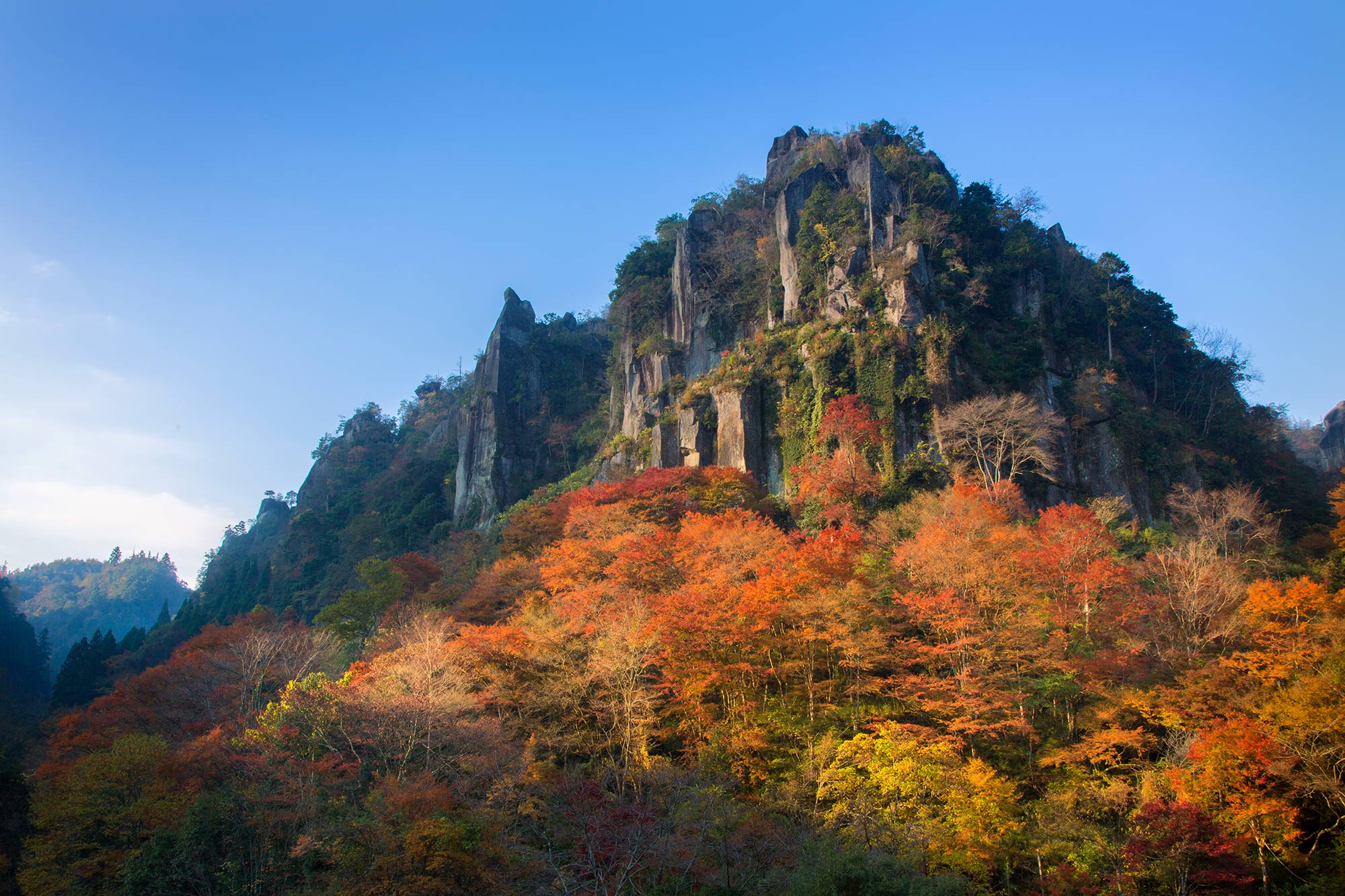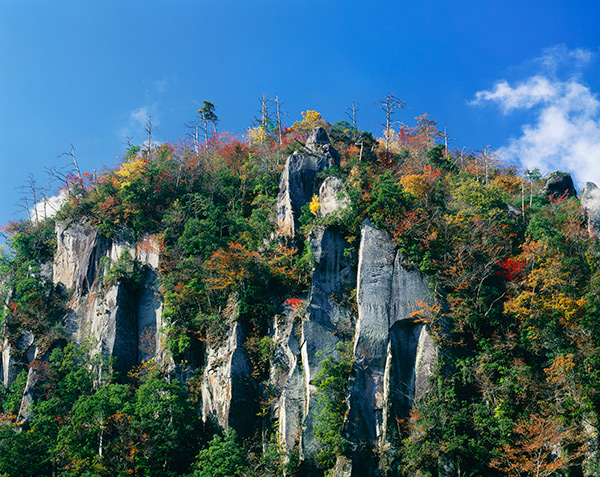

- Kenhoku Area
- Landscape
Hitome Hakkei
Photography/TAKEUCHI Yasunori
a Blend of Boulders, Trees, and Water
Yabakei Valley is mostly a mesa (table-shaped plateau). Yamakuni River and its tributaries have carved deep grooves into this sprawling, table-shaped volcanic stone plateau. In this area, nearly everything with “-kei” (view) attached to it is an eroded cliff or rocky mountain carved by the rivers, and the same goes for Hakkei.
However, the volcanic stone differs by region. Looking at the big picture, the northern area consists of lava from ancient times, whereas the southern part is called New Yabakei Volcanic Rock. Compared to the strangely shaped boulders and bizarre stones of the older rock clusters, this new volcanic stone is hard with geological joints, forming stone columns on either side of the U-shaped valley, with monoliths standing out in riverbeds. This is typical of Shin-Yabakei Valley.
Hakkei shows scenes where these stone columns and trees entwine. Autumn, when the leaves change color, is the most wonderful season. The same maple trees have leaves of red and yellow, with differences in depth of color. These colors are brought out all the more by the evergreens.
The reason the Yamakuni River Valley was given a Chinese-style name such as Yabakei was Rai San’yo, who made this “Scenic Views of the World” famous, but in truth he only walked the main basin. One wishes he could have seen Shin-Yabakei Valley.
Follow the path from Hitome Hakkei to find Utsukushi Valley, then even closer views of Mount Waka, Kinun Gorge, and over the plateau, Ura-Yabakei Valley. There are also many hot springs. You’ll want to enjoy sculpted sceneries the locals say were “drawn by the gods” along with these hot springs.

Trees entwined in the stone pillars create a spectacular scenery. Hitome Hakkei, where even the same maple trees reveal leaves of differing reds and yellows during the autumn season.

